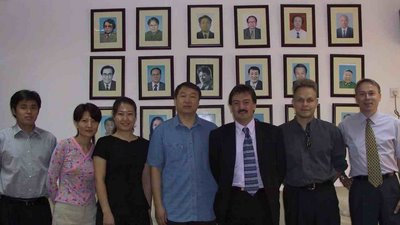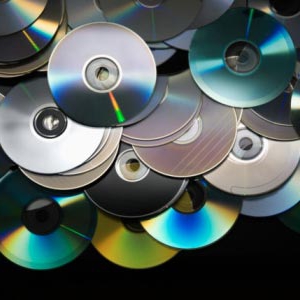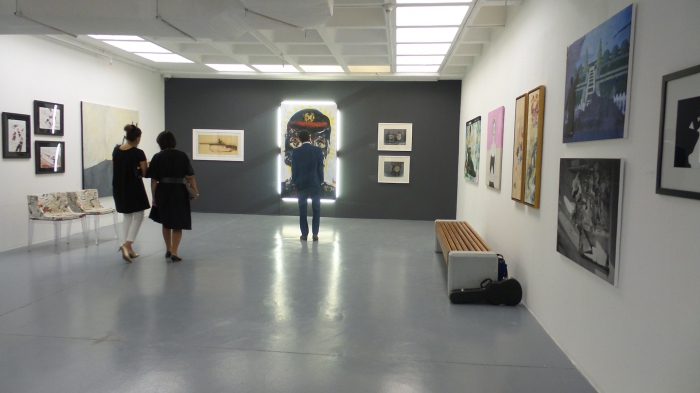Nowadays, the phrase "violation of copyright and related rights" is often found in the media. This concept has appeared in everyday life relatively recently and it means the illegal and unlawful use of objects of any form of intellectual property in order to extract material benefits.
These include the author’s creations of various types - musical and literary works, films, computer programs, photographs and paintings, texts, various teaching methods and much, much more.
It's no secret that the commercial use of the fruits of one's own labor (for example, the release of a movie rental) brings dividends to the authors. But sometimes (or rather, very, very often) completely foreign people profit from other people's works. In the above situation with the film, these are those who replicate and sell unlicensed copies of it without the consent of the author or whoever has the official right to conduct such activities.

What is copyright and related rights protection?
An important condition for the successful development of art, literature and science is not only recognition of certain civil rights by the authors, but also their reliable protection. From a legal point of view, this concept means a set of measures taken to recognize or restore them, as well as protecting the interests of owners in cases where there has been a dispute or violation of copyright and related rights.
Types, means, forms and methods of protection are quite regulated. But in practice, not all of its possibilities are realized. The fight against violations of copyright and related rights in our homeland is a complex, sometimes impossible task. While in the West this is a common thing, and lawsuits on this issue there will not surprise anyone for a long time.
Statistics show that the consideration by our courts of cases on this topic is a very small percentage of other civil cases. Although in recent years some changes have been outlined. Courts begin to more willingly and more often deal with violators - the legal literacy of the population, although slowly, is growing.
We are in Russia
Some conflicts do not reach the courtroom and can be settled in a pretrial order. But in general, to win a case in which the violation of copyright and related rights is involved is a very, very difficult task in our country. The reasons for this are the still low level of legal culture, the ignorance of the authors themselves in matters of their own rights and methods of protection, the lack of qualified specialists who are versed in this topic.
At the same time, in recent years and decades in Russia we are seeing an explosion of the number of such violations. This is due to an increase in the number of private publishing houses, video rental points, recording studios, etc. The rights of foreigners are most often violated, and the authorities turn a blind eye to this. In these conditions, the knowledge of the possibilities of defending one’s own interests by the authors is especially relevant.
Let's deal with the concepts
The said right to defense arises from its owner only at the time of violation or contesting thereof and is realized within the framework of civil law. Features of the subject of copyright and related rights infringement is that this concept is often interpreted ambiguously. Sometimes only an experienced lawyer can understand a topic.
The subject of protection in this case is not only the rights themselves, but also the interests under the jurisdiction of the law.These two concepts are very close in meaning and often coincide; therefore, they are not always differentiated both in practice and in legal literature. The rights adjacent to copyright, the Civil Code equates to the latter.
But the subjects of such rights may also have independent interests subject to judicial protection. An example is the requirement to take into account the opinions of all co-authors in a dispute over how and in what order the work will be used. Or in the decision to invalidate the copyright agreement.
Protection of interest (rather than the right itself) also happens in cases where the latter ceases as a result of a violation of the law. For example, if a unique work (without copies) is destroyed when copyright is automatically lost along with the object. Then it’s about protecting the interests of the author in type of claim about the damage caused.

Who will protect his interests?
The subjects of law are the authors of the works themselves, their heirs and assigns, as well as owners of related rights. By default, during the life of the author, only he (or the appointed representative) comes forward with a demand for protection. If it is published anonymously or under a pseudonym, the publisher or an authorized organization may become the guardian of his interests.
According to Art. 41 Code of Civil Procedure of the RSFSR in the case where there is a violation of copyright and related rights, a lawsuit in the interests of the author may be filed by the prosecutor. If we are talking about several co-authors, they can defend themselves together or each separately.
After the death of the author, claims for violation of authorship or the inviolability of the work may be presented by his heirs or by the person appointed for this will. Also, by the prosecutor or legal organization. If the author or heirs transferred the rights to works to third parties, protection in case of violations passes to them (Article 30 of the Law of the Russian Federation "On Copyright and Related Rights). But if such persons do not take any action, the author or his heirs protect their rights themselves .
Who are the pirates?
The violator in the indicated situation is a person (individual or legal) who does not comply with the requirements of legislative acts in this area. Such actions are called counterfeit, and those who conduct them are called pirates. This word has come into common use in our troubled times.
Who are these pirates? Judicial practice shows that they are both large well-known organizations and small one-day firms created solely for the purpose of releasing a single batch of counterfeit products.
In the first case, the situation is more favorable for the author, since a specific respondent is known. In addition, reputable firms value reputation and often prefer to dispense with the court and indemnify damages voluntarily. In the second case, most often there is nothing to take from the violator, even if his guilt has been proved.

State Pirates
Private firms and government organizations can be violators. Practice shows that it is easier to recover something from the first. Municipal and state organizations are justified by the absence in their estimates of the costs of paying any remuneration and do not want to be responsible for copyright infringement. That is, the activities of many philharmonic societies, palaces of culture, theaters, television and radio channels in advance involve "pirated" actions.
Forcing these organizations to obtain the required licenses or to conclude direct agreements with authors and legal owners of rights is often possible only in the courtroom. Cases of this category are moving slowly and with difficulty. This is because judges often sympathize with violators, especially budget organizations, with their difficult financial situation.
"Pirates" often become several "unlicensed" users. For example, reproduction of a phonogram in violation of copyright automatically implies the illegality of its distribution, broadcasting, public performance, etc.
Who is responsible
This provision is fundamental in conditions when it is not easy to find the main violator. The consequences should be borne by organizations (record companies, printing houses, points of sale of counterfeit products) that also violated copyright or related rights by their actions.
The prospect of their own responsibility before the court will force them to more carefully choose business partners and verify that they have the authority to use someone else's intellectual property.
Infringement of copyright and related rights happens both within the framework of the contract, and outside it. In the first case, the sanctions provided for in the contract are applied. In the second, the victim resorts to judicial assistance.

A word to the lawyer
Copyright and related rights are protected in the manner prescribed by law. Its form is a special set of organizational measures. There are two main varieties of such protection - jurisdictional and non-jurisdictional. The first is the activity of authorized bodies for the protection of disputed or violated rights. Its essence is in the appeal of victims to the court or other competent authorities, which are obliged to take preventive measures and restoration of rights.
Jurisdictional, in turn, may have a general defense order and a special one. According to the law, the protection and restoration of violated rights is carried out in court. Most disputes surrounding this topic are the responsibility of general courts (from district to provincial). If legal entities are suing each other, arbitration enters the case.
The lawsuit and how it is filed
A remedy for such rights in court is a lawsuit, that is, a claim to the court for the administration of justice. This procedure (referred to as the lawsuit) is always applied, except as otherwise provided by law.
According to the rules, a lawsuit is filed territorially at the location of the defendant or in another court, by agreement of the parties. For such claims, the plaintiffs do not pay a fee. She, like legal costs, is recovered from the defendant. This rule applies to courts of general competence and does not apply to arbitration.
The limitation period for claims for violation of property rights is 3 years. If personal non-property copyrights are affected, such restrictions do not exist.
Is it possible to do without court?
The administrative form is recognized as a special form of protection. It is used in isolated cases prescribed by law, as an exception. Victim has the right to seek protection from antitrust authority creative union or organization of the defendant with a complaint of violation of copyright and related rights. The procedure for submitting it and considering it is determined administratively.
A non-jurisdictional form of protection means independent actions of organizations and citizens in order to restore violated copyrights. Of course, we are not talking about arbitrariness - only legal means of upholding interests are considered. It could be, for example, withdrawal from the contract drawn up in violation of rights.
What is the responsibility for copyright (and related) infringement?
Now let's look at what punishment the law provides for such a crime. Let us turn to the Criminal Code. Article 146 of the Criminal Code of the Russian Federation violates copyright and related rights rather severely. For plagiarism (this term means the misappropriation of authorship), a tangible penalty is imposed. This is either a fine for a very serious amount (up to 200,000 rubles or the size of the convict’s salary for 18 months), or arrest up to six months, or correctional labor (up to a year).
The same amount of a fine (or conclusion either forced labor for an even longer period - up to two years) is provided for actions that the court considers as illegal use of objects of rights. This includes storage, acquisition, transportation of counterfeit objects for the purpose of marketing. It is indicated that we are talking about actions on a large scale.

More serious
The same article - "Violation of copyright and related rights committed by an organized group of persons (as well as by a person who used his official position or caused damage on a particularly large scale)" - punishes with even more severe measures.
The size of the fine increases to 500,000 rubles. or the convict’s three-year salary. Forced labor is appointed for up to 5 years. Imprisonment - up to 6 years.
About the scope of the crime
What size of deed (in legal language) does the law consider to be committed on a large scale, and what - on a particularly large scale? Their classification depends on the amount of damage caused. The same article of the Criminal Code in its note defines the amount of 100,000 rubles as the criterion of “coarseness” of criminal acts, and in a million rubles - of “special coarseness”. We are talking about the cost of copies or phonograms of counterfeit works or the cost of rights to use the copyright object.